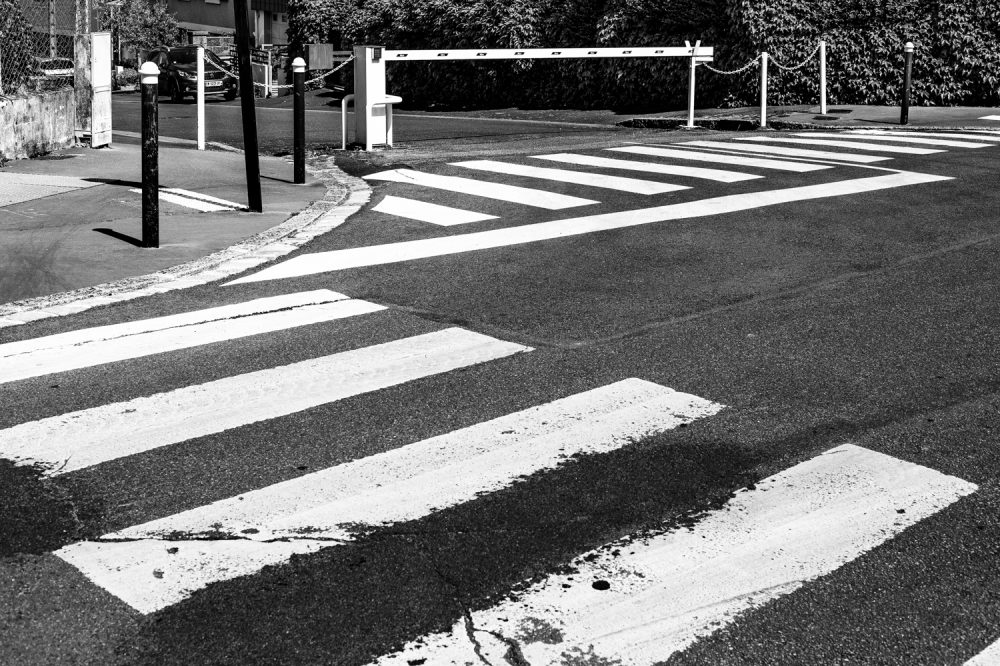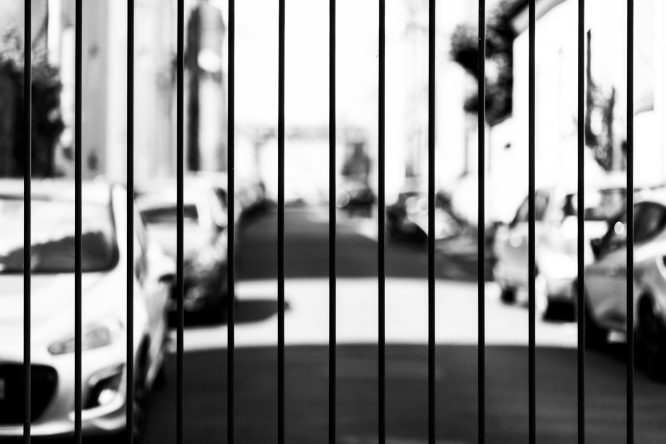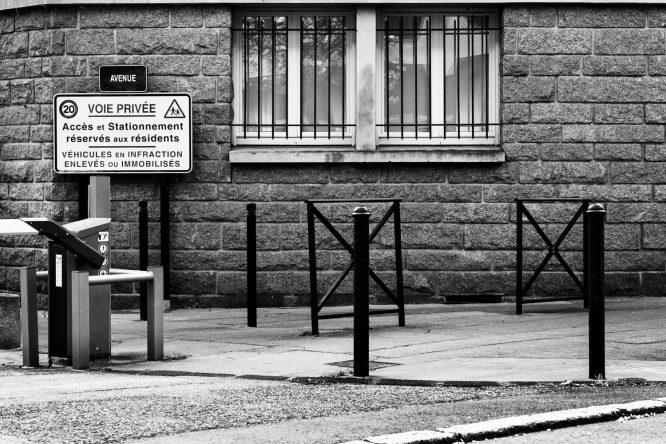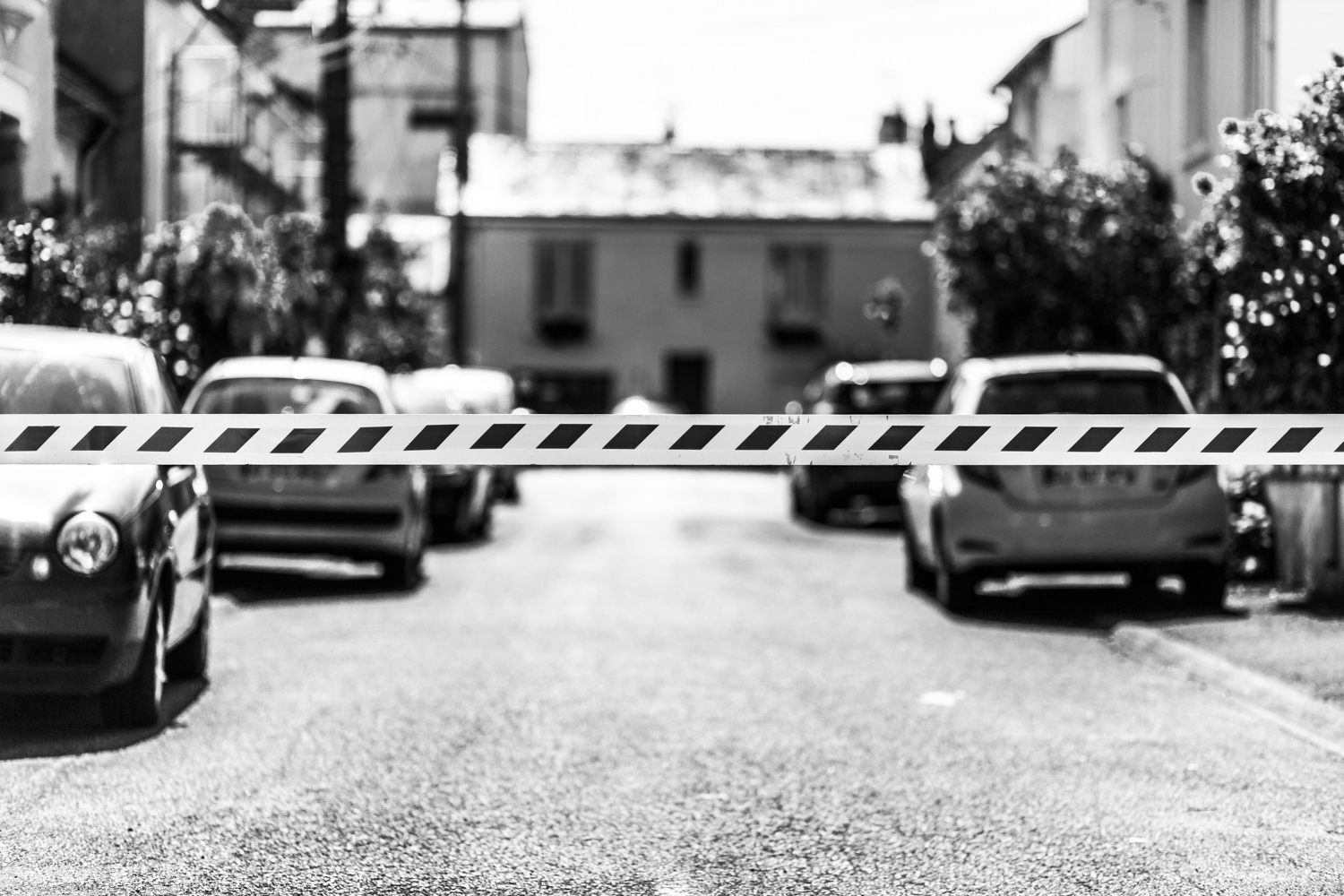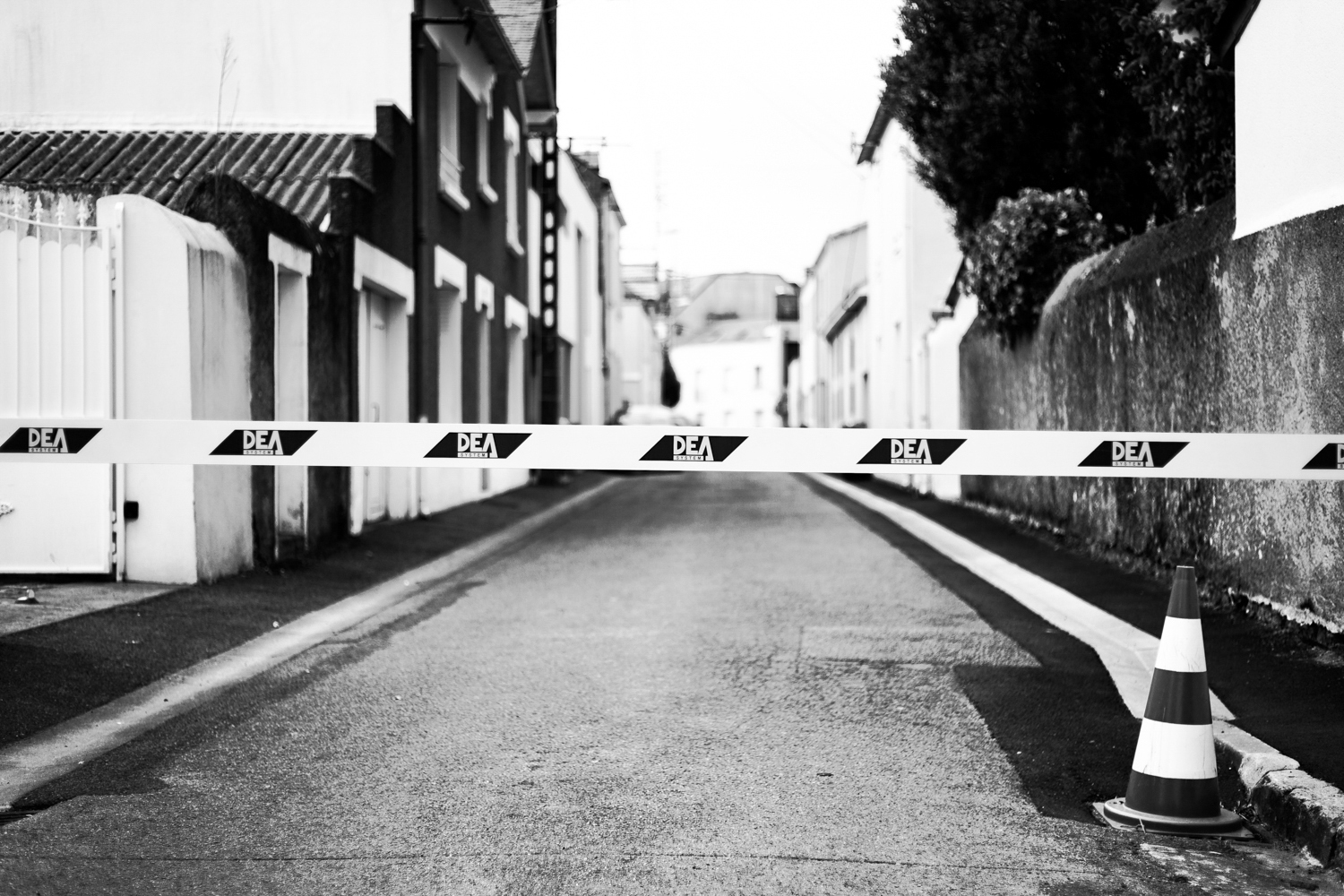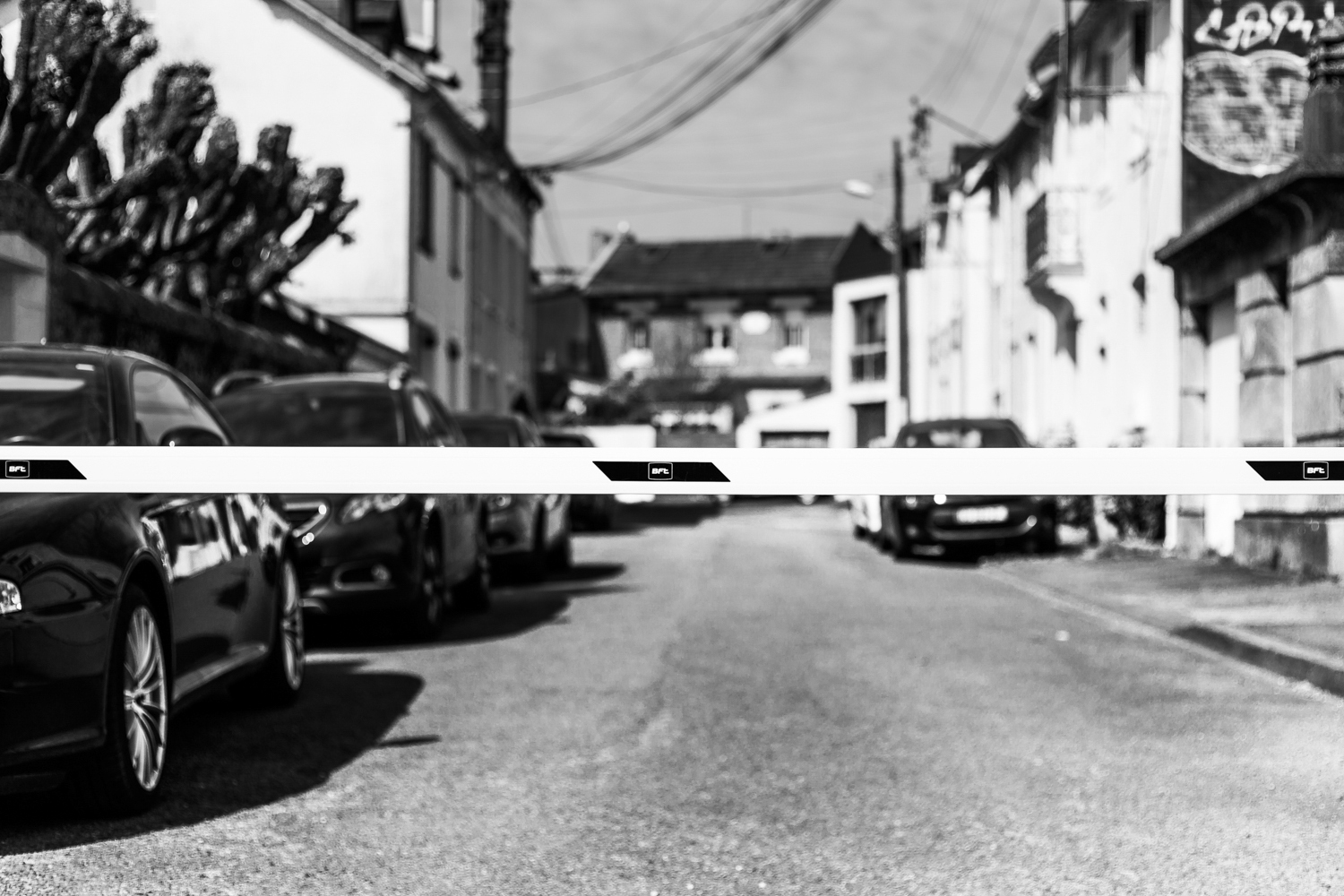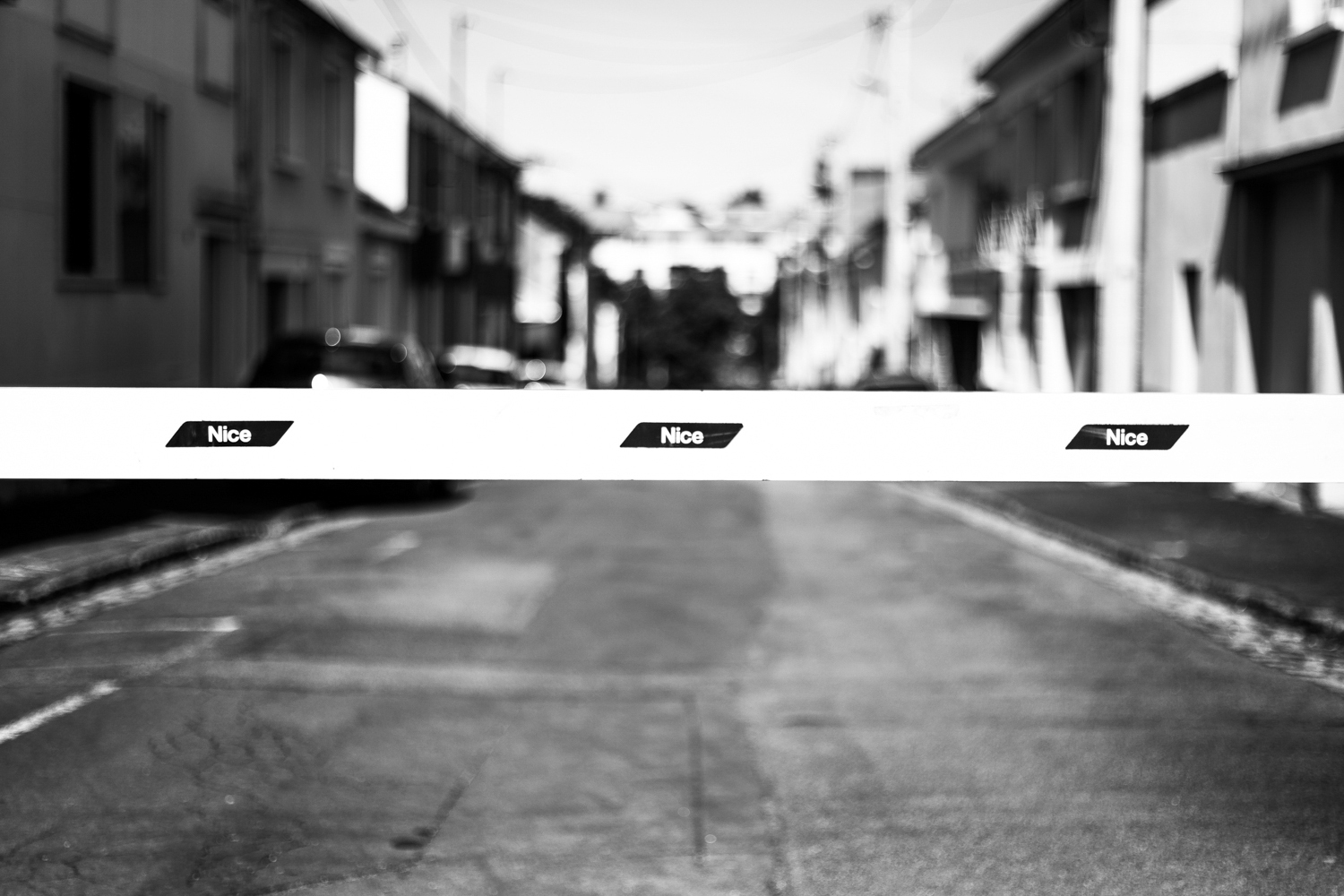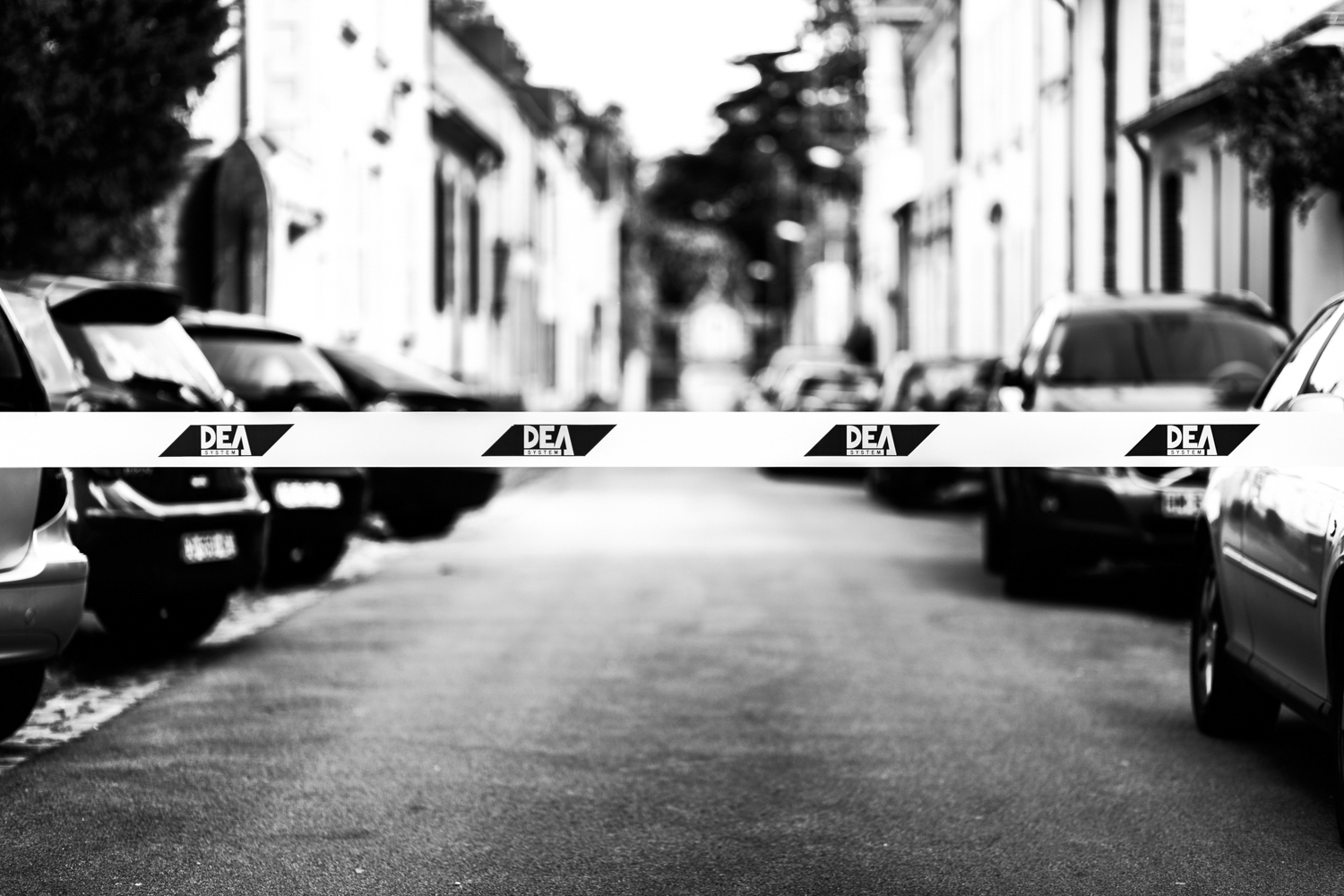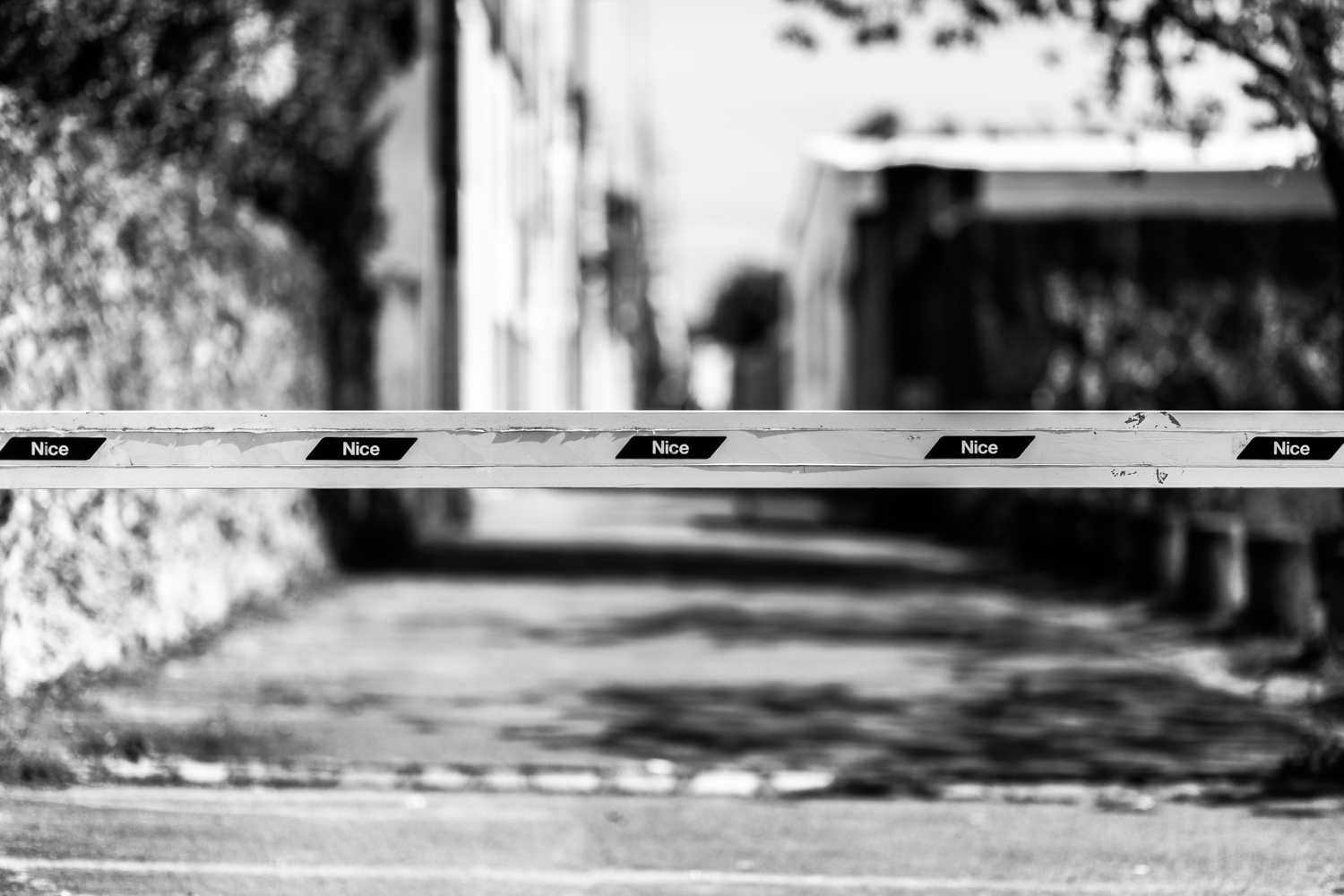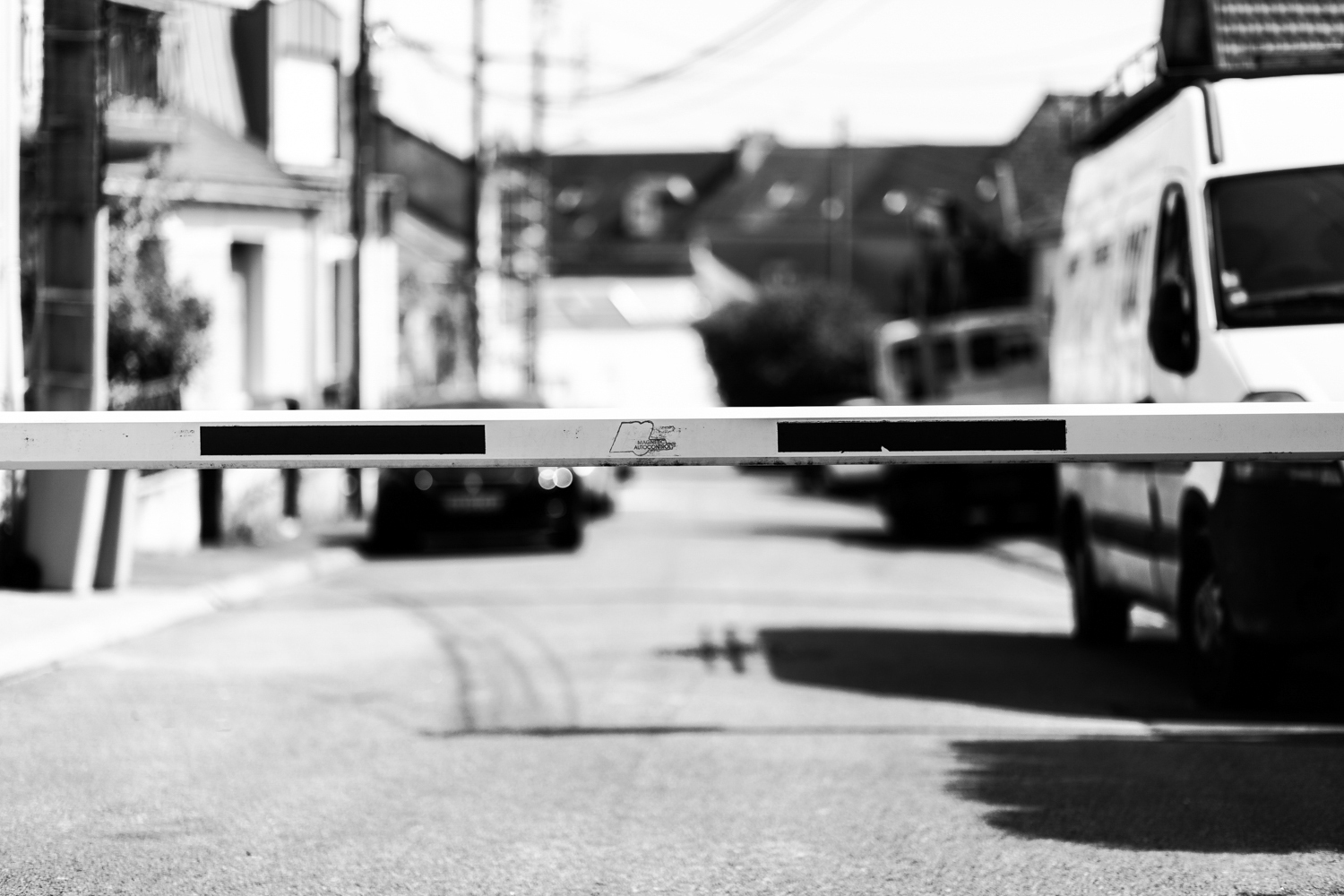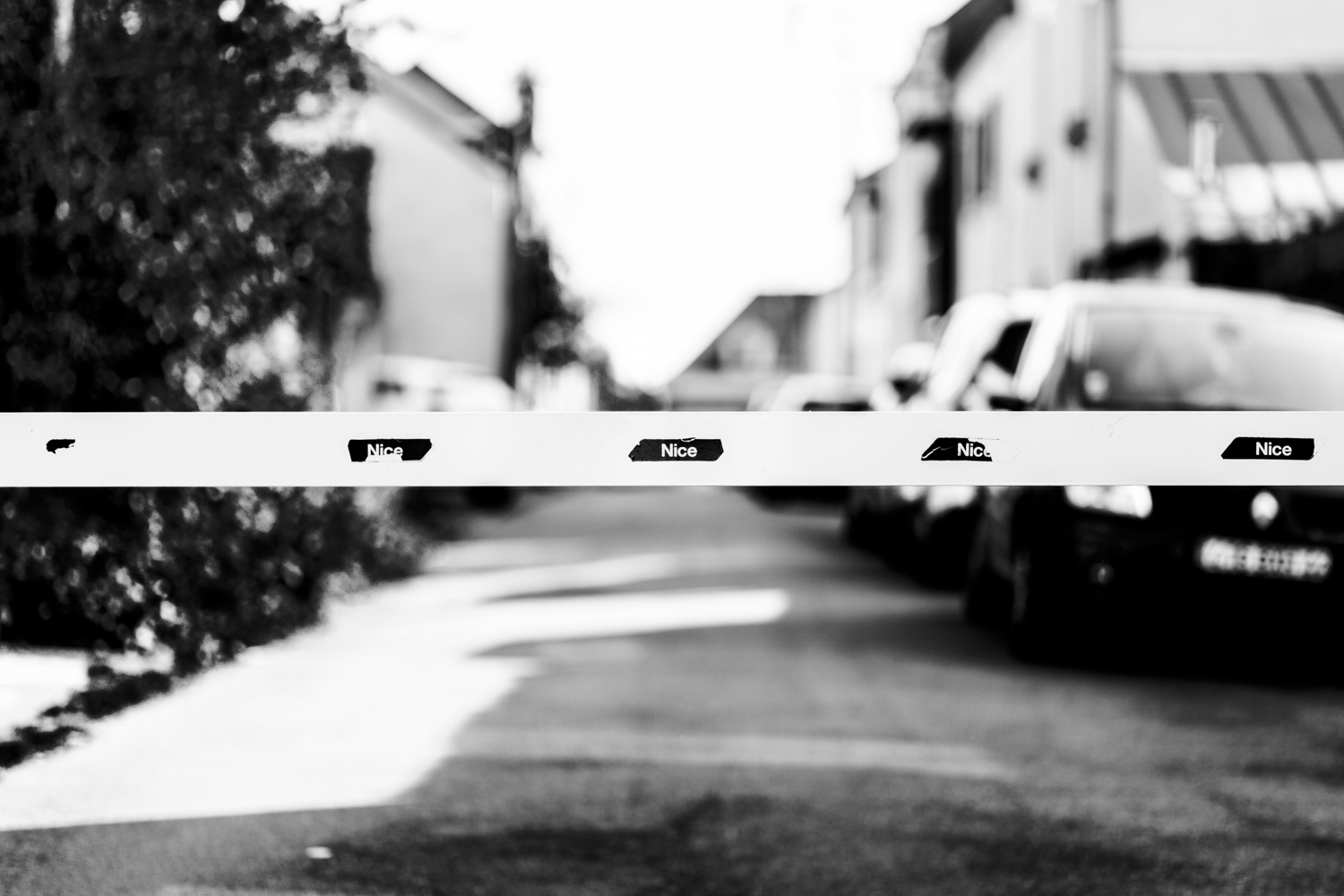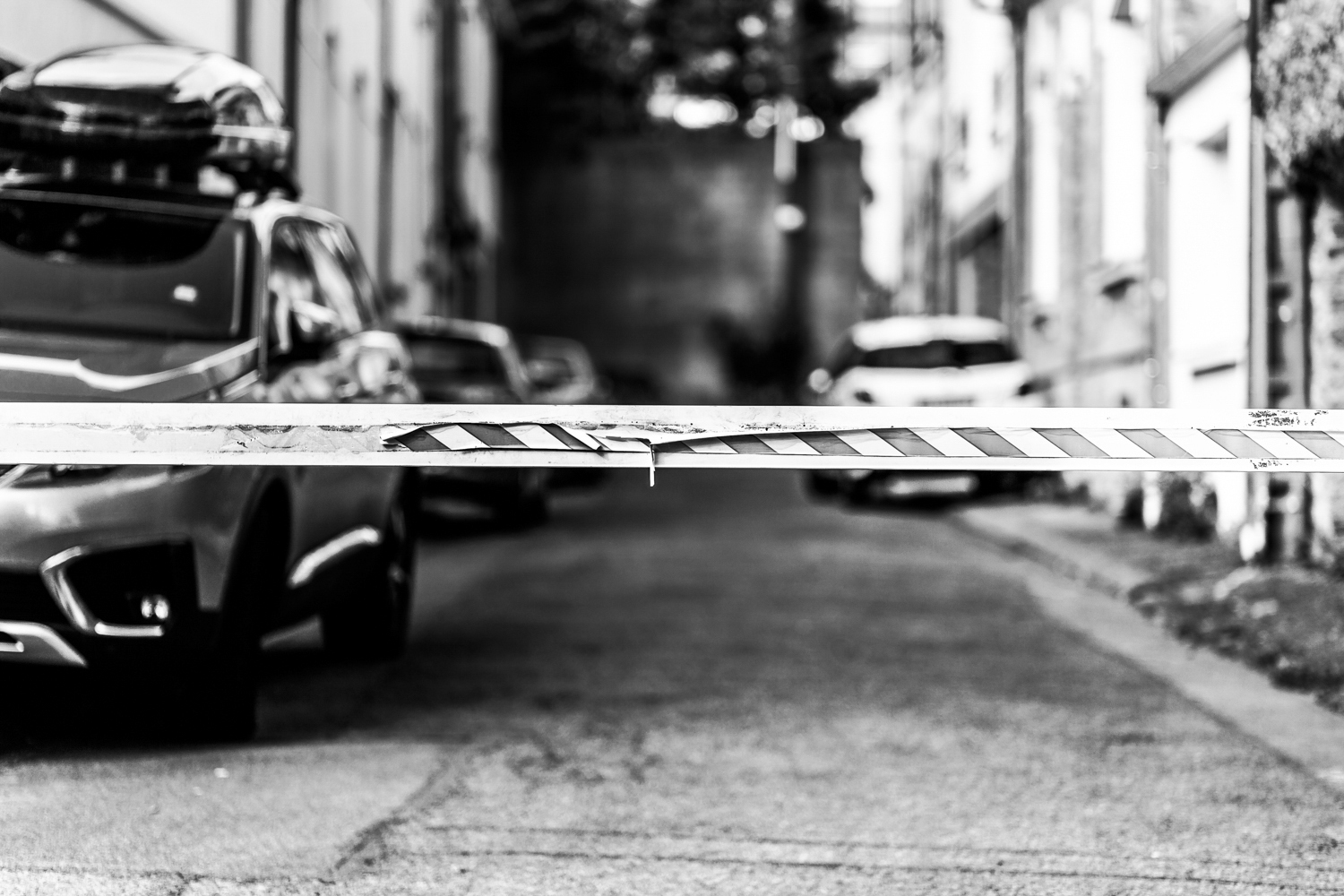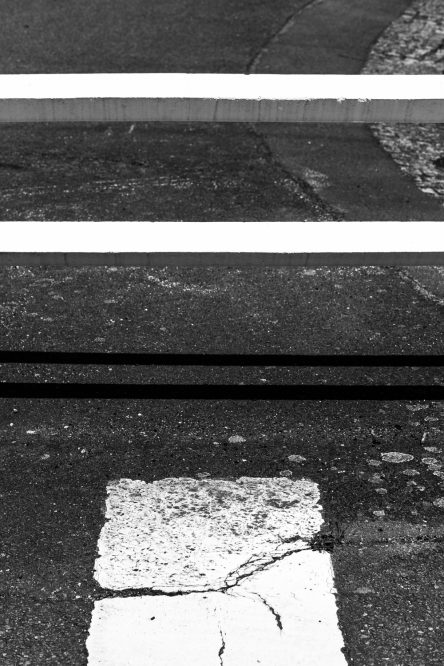When we were young, with a friend, we often walked in our town; without any purpose. Wandering was conversations, explorations. Some people walk around, but we were one with our asphalt environment, we knew the town like the back of our hand. Everything was familiar to us. Everywhere, we were home…
(the layout of the following is optimized for browsing on a computer)
One day, he tells me he has discovered an « American-style » kind of street. We go there straight away.
The houses are quite large, guarded by patches of very green grass. The blades of grass are all the same size. But we watch it all from a distance, hands on bars. Because on the threshold of this Eden, what gave the « American-style » label is a large gate enclosed by small pillars. This iron is forged to tell us “ Do not come in, you are trespassing, you are in our street! “.
It’s clean. This stuff is amazing. Today, I know the name of this thing: gated community.
Twenty years later, I’m walking in another town, for a more professional wandering, camera in hand. In this way, I take over one of my new towns, my new space. I roam, observe, go along, cross, sense, branch off,
bam !!
I bump into a barrier. It closes the street, screens authorized people. I don’t understand: to close a street? This surprises me enough to start shooting. The Eden of my adolescence comes back to me quickly.
I would have innocently walked my way if this french saying hadn’t popped up into my head :
The freedom of some ends where that of others begins.
I never understood this sentence. I have never understood its relevancy, my intuition has no breath. I don’t know what to answer, or blasé: Yeah, if you want… A slightly authoritative aspect of the injonction keeps me away from it and a relative complexity at first doesn’t help me figure out its meaning. The way it arises here so suddenly like a wave of this fence blow in the stomach, pushes me to make the connection.
This street is private. There are plenty of them in the town. But most of them are private and closed. Streets are my immediate environment as a city dweller, so I find it difficult to understand. Beyond this residential screen, a fence is a symbol. A symbol of prohibition, control… closure. In front of it, we know what to do.
The device is well chosen.
I could then move on. If I pay attention, it is because, although it doesn’t concern me, it affects me. I shoot, go in search of new closed streets and despite myself this reflection is articulated like one of the cogs of my walk.
Why does it bother me so much? The fence stopped my freedom of movement, where the freedom of the owners of private roads to build it began. This is freedom.
Ok ! But no.
This adage is never suggested as a definition, a vision, among others. I have always heard it with the confidence of assertion. Taking a fence in the gut has something of this aplomb. I make a link to the sentence because I find its representation there, the image of an interpretation understood and to which I subscribe.
Everyone has his/her own definition of freedom. Everyone looks out for oneself. And my freedom is no longer the freedom of others. Quack.
My quest, in long hours of walking, guides me to define the assertion. In doing so, it seems to me that a mistake has been made, not so trivial.
Yeah ! It’s not about freedom.
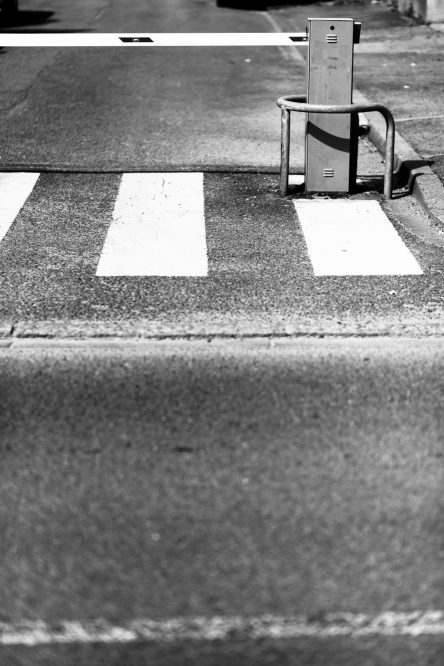
The purpose, above all, is to define a partition. And nothing suggests porosity. I wouldn’t define freedom with partition, but we’re not talking about freedom here.
Does the assertion imply benevolence towards others? It doesn’t either, because any contact is avoided.
Therefore, what is defined here is not freedom but our relation to one another. And it’s not about freedom, because paying attention to the other is not a matter of oppression.
The assertion demonstrates, not without paternalism, that freedom has its share of constraints. Maybe, but paying attention to the other is not a constraint. To have a constraint, you need to have an identical situation, without the constraint. It points out a situation that exists with and without. However, a one-person society does not exist. The “other” cannot be a constraint. “The other and I” are the constituents, that’s the basic definition of a society.
The assertion draws a perimeter as a limit to our freedoms. Like a lanyard, attached to a stake, and its size allowing our actions never to encroach on the neighboring circumference. A well-calculated leash size; like dogs in a kennel.
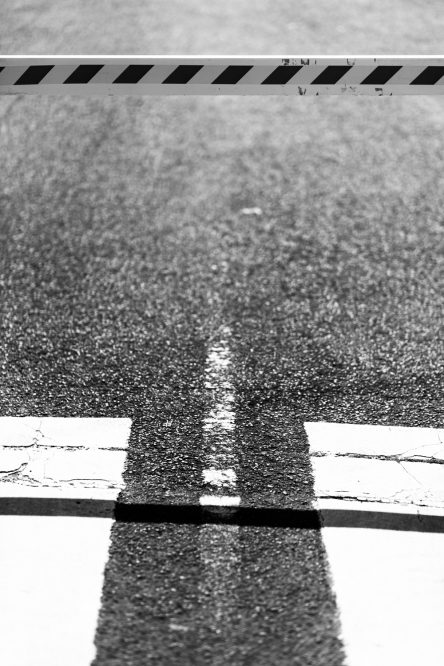
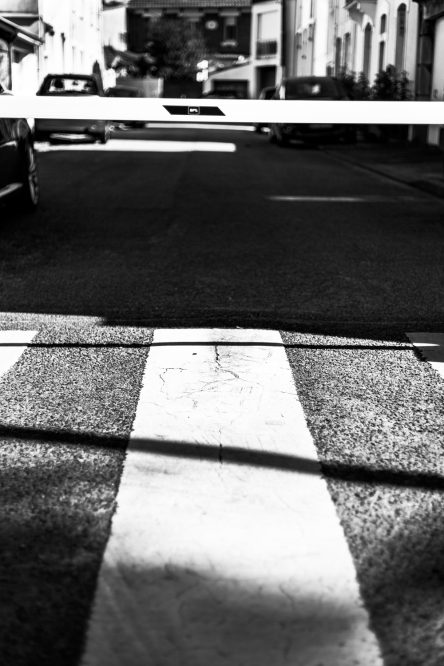
The heart of the assertion consists of “we don’t do what we want”. Again, this is not oppression. “Doing what you want” is not a matter of freedom. ” To do what one wants” would be to deny the other. “Doing what you want” is to refuse society, society and groups. It is therefore not a question of freedom, but of one’s relationship to others, an crucial matter of our social lives. The difference is massive.
The author of this assertion, but above all his followers, actually reveals one thing: their vision of the other within society as a stranger, a stranger we do not want to have to deal with.
The barrier comes back here and scores the debate with suspicion. The unknown is dismissed, the thought of the unknown is avoided. The assertion defines self-sufficient beings and mistakens the need to define the field of our flourishing gestures as a vacuum environment.
However, building a barrier reduces traffic drastically. Calm in the city center is seducing.
To have a place to park your car when you want, and especially when you get back from work is just as attractive.
The concrete limitation shapes a nest, cocooning the inhabitants of these closed streets within a mini village. How friendly ! How Attractive.
To steal a car in a confined area? How Complicated. How Attractive.
This daily comfort does not concern me. So these arguments are unstoppable. Within these private streets, owners with reserves about the installation of a barrier are, despite everything, convinced by these comforts. Then inertia consents. It’s quiet, the place is free, it’s friendly. It’s ideal!
However, is it effective? That is no longer the question. The presence of this barrier is reassuring.
Being reassured is essential today. Primordial!
In fact, secondary. The first reflex for our homes and objects is insurance. But, possibly instrumentalized by this contract, we obtain the equipment of a “reassurance”. In short, we put our possible fears in armor. Here barriers, there cameras, digicodes, palisades, a layer of doors, the customs arsenal in our own pockets… curled up, frightened, inhibited. Beware of the dog !
Ok. If you want…
The stranger and the unknown are an confused mixture of constraint and threat. Let us tighten our bonds to anxiety and anguish, by this imperious need to exorsize our fear, confusing intimate with societal. Tomorrow, maybe we will educate our children by forbidding them to speak to strangers? Fences warn us, easier to instruct.
The prophecy is self-fulfilling. The danger is no more. Thus evacuated in town planning, fear is no more either and we will even be beyond freedom since the other will no longer be our concern;
nirvana.
Ok.
If you want…
But no.
It is one thing to delimit, it is quite another to draw up borders and control access. So urban calm as a non-melody for the scansion of cantors and other proselytes of mistrust? And our fortified bubbles constitute our only environment, confiscated by decorum… weird, no?
So the fortified bubbles of some stop where the fortified bubbles of the others begin. That’s what this barrier spits in my face, because it closes on me before I even approach it; because it is a symbol, because it is a language, because it is a violence.
Eng | Fr




